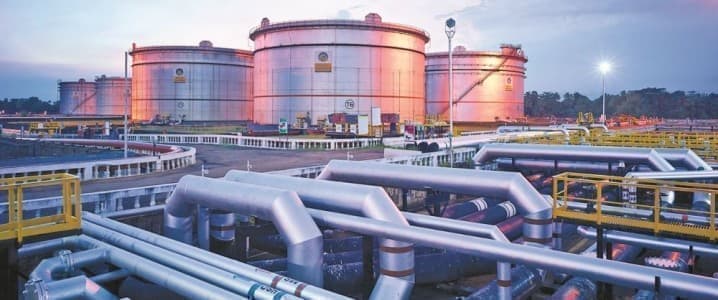Despite speculation that oil demand peaked in 2019, before the global pandemic hit the industry hard, a new IEA report suggests this assumption may have been overstated as demand is set to continue increasing until 2026.
Innovations in renewable energy and the decreased demand in response to the Covid-19 pandemic made experts believe the oil era was slowly losing momentum. However, as the Asian market grows and many countries return to pre-pandemic demand levels, this may not be true.
According to the new IEA report, demand for oil could hit pre-pandemic levels within the next two years. By 2023, oil production could exceed 100m bpd if world demand, driven significantly by Asia, continues at its current growth rate.
While oil demand may not return to pre-pandemic levels in most developed countries, due to travel and work changes that have driven demand down over the last year and look set to stay as well as greater uptake of electric vehicles and other renewable options, demand across the developing world as well as major consumers like China could be the main drivers of this demand.
Related Video: Why The Oil & Gas Rig Count Matters
Asia is expected to account for around 90 percent of the world’s growing oil demand over the next five years. Although demand may not increase at the same rate at pre-2019, growing populations will add significantly to the oil-needs of several Asian countries such as India and China.
Advances in renewable energy, particularly the development of solar power infrastructure in the developing South where sun is an abundant resource, as well as the pressure from governments and companies to meet net-zero carbon emission objectives, could drive oil and gas demand down over the next decade. But not before it peaks prior to the fall.
The uptake of electric vehicles, driven primarily by Europe, China and the USA, is also expected to push down oil demand by 2030. Deloitte predicts a 29 percent CAGR for the EV market over the next decade, with sales of EV increasing from 2.5 million in 2019 to 31.1 million in 2030. However, the impact of Covid-19 on many world economies has stalled EV progress, which is expected to pick up again from 2022/23, just as oil demand reaches its new peak.
As demand steadily rises, OPEC’s energy supply curbs over the last few months could present a significant advantage for the oil-rich region. The IEA has outlined the "hefty amount of spare production capacity" brought about by OPEC restrictions to drive up oil prices this year. However, it also anticipates a growth of 700,000 bpd of oil supply for non-OPEC states in 2021.
The OPEC strategy of restricting oil production until oil prices stabilised appears positive for the industry as a whole, which is now looking towards a 2021 of increased oil demand at higher prices.
Overall, as economies across the globe stabilise and the vaccine shows promise to experts that were unsure about the potential for oil following the 2020 demand dive, the oil industry will continue to meet a growing global demand until renewable technologies and greener policies eventually force countries to look towards alternatives.
By Felicity Bradstock for Oilprice.com
More Top Reads From Oilprice.com:
- Oil Extends Losses On Renewed Demand Concerns
- Saudi Arabia Must Prepare For More Attacks On Its Oil Industry
- Oil Prices Retreat As Biden Plans Major Federal Tax Hike


















So if Asia is expected to account for around 90% of the global oil demand growth over the next five years and China is already accounting for 80% of this growth, it means that the rest of Asia will be accounting for only 10% of global demand growth.
This is supported by the fact that China’s crude oil demand of 15.47 million barrels a day (mbd) in 2020 was 14% higher than in 2019 despite the pandemic. Moreover, it accounted for 16% of global oil demand. China aims to double the size of its economy by 2035. This means that China’s GDP will grow from $24.20 trillion in 2020 based on purchasing power parity (PPP) to an estimated $48.4 trillion by 2035 in line with its leadership’s long-term economic goal. China’ GDP at $24.2 trillion in 2020 was 15.6% larger than the United States’ at $20.93 trillion.
Even with projected sales of 31 million EVs by 2023, their impact will hardly register on the radar of global oil demand. By 2030 oil demand is projected to amount to 114 mbd of which 73% or 83 mbd will be used to fuel 2.0 billion internal combustion engines (ICEs) by then. So 31 million EVs on the roads will reduce global oil demand by a miniscule 1.29 mbd or 1.55%.
Dr Mamdouh G Salameh
International Oil Economist
Visiting Professor of Energy Economics at ESCP Europe Business School, London